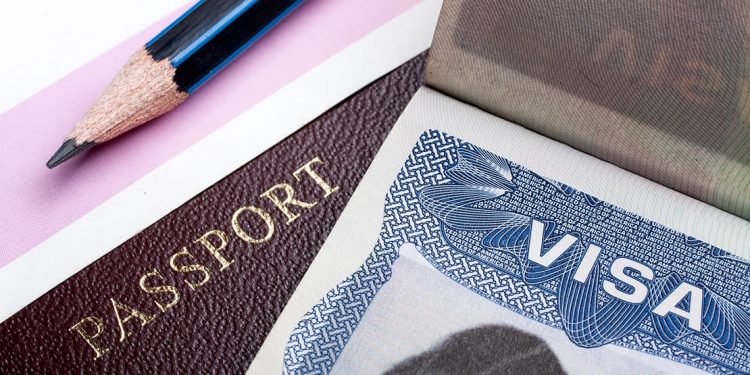How to Get a Visa and Enjoy Your Trip of a Lifetime
Be Prepared
You’ve finally saved up enough cash and vacation days to take your next trip. You have been drooling over Instagram photos of your destination, you’ve got your travel insurance sorted out, and you’re ready to jump on the next plane.
But before you book your flight, you should answer one simple question; all of your travel planning could hinge on the answer.
Will I Need a Visa?
The question might be simple enough, but the answer isn’t always straightforward. There are so many things that have to be factored in, and so much information to sift through.
Usually this one question brings up a dozen more: when do you need one? In which countries? How do you get one? What is the process like? Is it worthwhile? What should you know? What is a visa anyway?
Let’s Start with the Basics. What Exactly Is a Visa?
A visa is a document in your passport that grants you conditional authorization to legally enter, leave and stay for a specified period of time in the country you are traveling to. Not all visas are the same, and not all countries treat visas the same way.
There are Tourist Visas, Study Visas, Business Visas, Working Visas, and so on. The type of visa you are issued will depend on the purpose of your travel and the length of your intended stay.
Online travel reviews can be a very valuable source of information about a travel destination, they don’t necessarily tell the full story.
This All Sounds Pretty Complicated. How Do You Know When You Need a Visa?
There is no one answer for when you need a visa. The need for a visa depends on where you are from and where you are traveling to.
The only way to find out if you need a visa, what kind of visa you will need, and how to apply for it, is to do your research. Thoroughly.
You are the only person responsible for procuring the correct visa: your travel agent or airline may be able to point you in the right direction, but it is really down to you to make sure you have all the right information.
The best way to get accurate and up-to-date information is to visit the embassy website of the country you plan on traveling to. You can also contact the embassy directly via telephone, or visit if you happen to live near enough to the physical embassy.
What Is the Visa Application Process Like?
When it comes to how to get a visa the process varies, depending on the kind of visa you are applying for. To find out if you need a visa, you have to check each country you are planning on traveling to individually.
If you are traveling solely for the purpose of tourism, you may not need a visa as often as you think. Many countries allow visitors to enter visa-free for an allotted period of time, usually from 30 to 90 days.
For travel to New Zealand, for example, passport holders from more than 60 visa-waiver countries can enter the country visa free for a stay of up to 90 days.
In some countries you may be able to obtain a visa on arrival. You may be able to pay the visa fee and complete any necessary paperwork as you are going through immigration, or even at the departure airport.
With travel to Cuba for example, nationals from eligible countries can purchase the Tourist Card that is necessary to enter the country directly from the airline, at the check-in counter.
For countries with stricter visa application procedures, you may need to fill out a form in advance to get a visa. As technology advances, in many cases now you can simply fill out this form online, and pay for any applicable fees with a credit card.
Travelers from the United States or Canada who plan on visiting Australia can apply for an Electronic Travel Authority (ETA) online, for example. It’s usually issued instantaneously and is electronically linked to your passport, so you won’t have to print or physically present any paperwork at immigration.
Not all visas are this easy: some will require you to jump through a series of hoops before you will be issued a visa. In some cases you may need to send off your passport, in which case you need to start the application well before your travel date.
You may also need passport-sized photos, proof of your itinerary and medical insurance in order to complete the application. Russia is one country that maintains a restrictive visa regime.
To obtain a Russian visa, you will need to comply with a sponsorship system: that means you need a letter of invitation from a hotel or agency in Russia. Your visa has to be issued by a Russian embassy or consulate, so you need to fill out an extensive application form and pay a substantial fee.
Unsurprisingly, a lot of people just skip visiting Russia altogether.
Complicated visa applications can be daunting and confusing. There is the option of using an agency to deal with getting your visa, but of course this comes at an additional cost.
How Long Does It Take for a Visa to Be Issued?
For visas that require applications, processing times can vary between a few days to several weeks. Even for simple online applications, it is a good idea to start the application process as soon as you know your travel dates.
What Happens Once Your Visa Is Issued?
You’re good to go! Once you have your visa you have official government approval to legally enter the country you are traveling to.
Be careful to respect the limitations of your visa though: don’t overstay your welcome. If you try to exit a country with an expired visa, you could face potential fines, detention, and just a whole lot of red tape.
This would be a pretty awful way to end your holiday, so make sure you book your return flight for a date within the validity of your visa. Apart from that, once you have a valid visa, all you have left to do is to plan out the trip of a lifetime.







